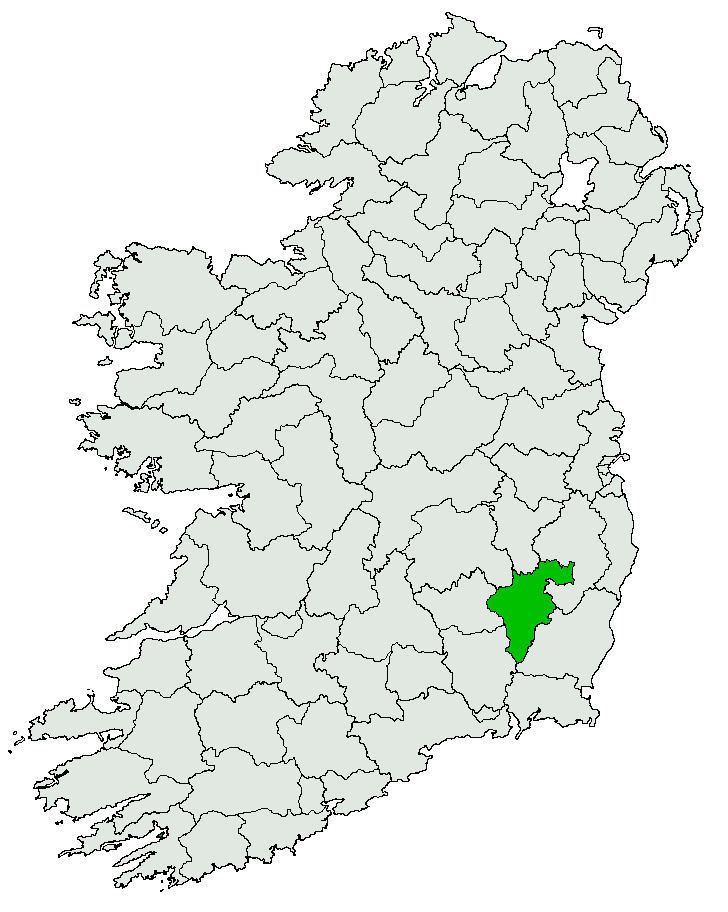Number of members One | Province Leinster | |
 | ||
Points of interest Brownshill Dolmen, Altamont Gardens, Carlow Castle, Carlow County Museum, Mount Leinster | ||
Carlow County was a parliamentary constituency in Ireland, which from 1801 to 1885 returned two Members of Parliament (MPs) to the House of Commons of the United Kingdom of Great Britain and Ireland, and one MP from 1885 to 1922.
Contents
- Map of Co Carlow Ireland
- Boundaries and Boundary changes
- Politics
- Dil ireann 19181922
- MPs 18011885
- Elections in the 1880s
- Elections in the 1890s
- Elections in the 1900s
- References
Map of Co. Carlow, Ireland
Boundaries and Boundary changes
This constituency comprised the whole of County Carlow, except for Carlow Borough 1801–1885.
It returned two MPs 1801–1885, but only one from 1885 to 1922. This was the only Irish county not divided for Parliamentary purposes in the redistribution of 1885. It was thus the only Irish county constituency to exist at every general election from the union with Great Britain to the partition of Ireland.
The constituency ceased to be entitled to be represented in the UK House of Commons on the dissolution of 26 October 1922, shortly before the Irish Free State came into legal existence on 6 December 1922.
Politics
In the 1918 election the Sinn Féin candidate was unopposed.
Dáil Éireann 1918–1922
The constituency was, in Irish republican theory, entitled to return one Teachta Dála (known in English as a Deputy) in 1918 to serve in the Irish Republic's First Dáil. Sinn Féin used the UK general election in 1918 to elect the Dáil. The revolutionary body assembled on 21 January 1919. The list of members read out on that day included everyone elected in Ireland. Only the Sinn Féin Deputies participated in the Dáil, but the other Irish MPs could have done so if they had chosen to adhere to the Republic.
The First Dáil, passed a motion at its last meeting on 10 May 1921, the first three parts of which make explicit the republican view.
The Second Dáil first met on 16 August 1921, thereby dissolving the First Dáil.
Sinn Féin had decided to use the polls for the Northern Ireland House of Commons and the House of Commons of Southern Ireland as an election for the Irish Republic's Second Dáil. No actual voting was necessary in Southern Ireland as all the seats were filled by unopposed returns. Except for Dublin University all other constituencies elected Sinn Féin TDs. As with the First Dáil, the other Deputies could have joined the Dáil if they chose.
From the Third Dáil onwards the Dáil represented only the twenty-six counties which formed the Irish Free State.
In the 2nd and 3rd Dála Carlow formed part of the Carlow–Kilkenny constituency.
MPs 1801–1885
Notes:-
